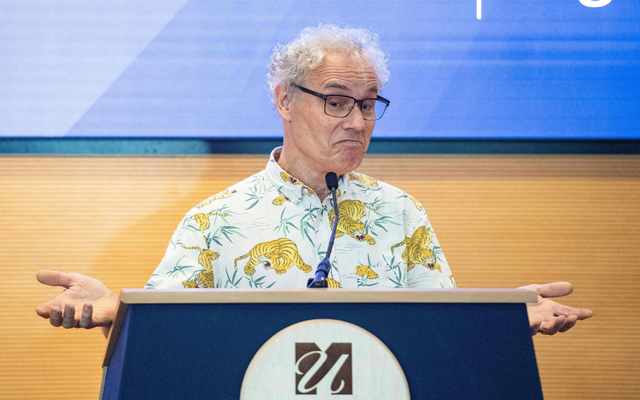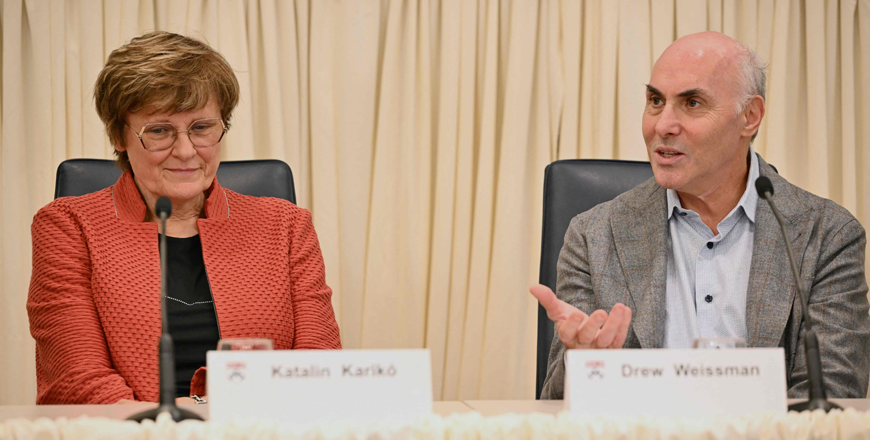You are here
DNA research deployed in war on cancer scoops Nobel Prize
By Reuters - Oct 07,2015 - Last updated at Oct 07,2015
STOCKHOLM/LONDON — Three scientists from Sweden, the United States and Turkey won the 2015 Nobel Prize for Chemistry on Wednesday for working out how cells repair damaged DNA, providing new ammunition in the war on cancer.
Detailed understanding of DNA damage has helped drive a revolution in cancer treatment as researchers develop new drugs that target specific molecular pathways used by tumour cells to proliferate.
Tomas Lindahl, Paul Modrich and Aziz Sancar won the prize for "mechanistic studies of DNA repair". Their work mapped how cells repair deoxyribonucleic acid (DNA) to prevent damaging errors from appearing in genetic information.
In many forms of cancer, one of more of these repair systems is broken.
"Their work has provided fundamental knowledge of how a living cell functions and is, for instance, used for the development of new cancer treatments," the Royal Swedish Academy of Sciences said.
Thousands of alterations to a cell's genome occur every day due to spontaneous changes and damage by radiation, free radicals and carcinogens — yet DNA remains astonishingly intact.
To keep genetic materials from disintegrating, a range of molecular systems monitor and repair DNA, in processes that the three award-winning scientists helped map out.
"It's important for cancer prevention and cancer treatment. That is what I received it for," Sancar, who has US and Turkish citizenship and is a professor at the University of North Carolina, told Reuters by telephone from his home.
Sancar said he had been inundated by calls but his immediate plans were to shower, shave and go to his lab.
Modrich, a researcher at the Howard Hughes Medical Institute and Duke University School of Medicine in the United States, told Reuters he received the news while on vacation at his cabin in New Hampshire and was completely taken aback.
In fact, he did not get the word from Stockholm until around 8am ET, more than two hours after the initial announcement.
Modrich, whose work led to an understanding and diagnostic tests for the most common form of hereditary colon cancer, has previously told how he was inspired by his biology teacher father, who said: "You should learn about this DNA stuff."
That was in 1963, the year after the Nobel Prize was awarded for the discovery of the structure of DNA.
Key to life on Earth
Lindahl, who works at Britain's Francis Crick Institute and Clare Hall Laboratory, said he was surprised by the news, although he knew he had been considered for a prize over the years, along with "hundreds of other people".
In the early 1970s, DNA was viewed as a stable molecule but Lindahl showed it actually decayed at a rate that ought make the development of life on Earth impossible, which in turn led him to uncover the counteracting repair process.
Sancar, meanwhile, worked out how cells repair ultra-violet damage and Modrich uncovered the mechanism for correcting errors during cell division.
"Without these mechanisms we would probably not exist and would certainly all die young," said Mark Downs, chief executive of Britain's Royal Society of Biology.
Over the years, the work of the Nobel trio had been important in pointing the way to better disease treatments, especially for cancer, Lindahl said.
"We have to understand the mechanisms, so we can selectively provide good therapy," he told a news conference by telephone from London. "We can't avoid DNA damage. We live in a world where we get exposed to DNA damaging agents all the time."
The 8 million Swedish crowns ($969,000) chemistry prize is the third of this year's Nobels. Previous winners of the chemistry prize have included Ernest Rutherford, Marie Curie and Linus Pauling.
The prize is named after dynamite inventor Alfred Nobel and has been awarded since 1901 for achievements in science, literature and peace in accordance with his will.
The medicine prize was awarded on Monday for work in developing drugs to fight parasitic diseases, while the physics prize went to researchers investigating ghostly sub-atomic particles known as neutrinos.
Related Articles
OSLO/STOCKHOLM — The announcement of the Nobel Medicine Prize on Monday opens an unusual 2019 Nobel season in which two literature laureates
STOCKHOLM — US scientists Victor Ambros and Gary Ruvkun won the Nobel Prize in Medicine on Monday for their discovery of microRNA and its ro
STOCKHOLM — Researchers Katalin Kariko and Drew Weissman won the Nobel Medicine Prize on Monday for work on messenger RNA (mRNA) technology














